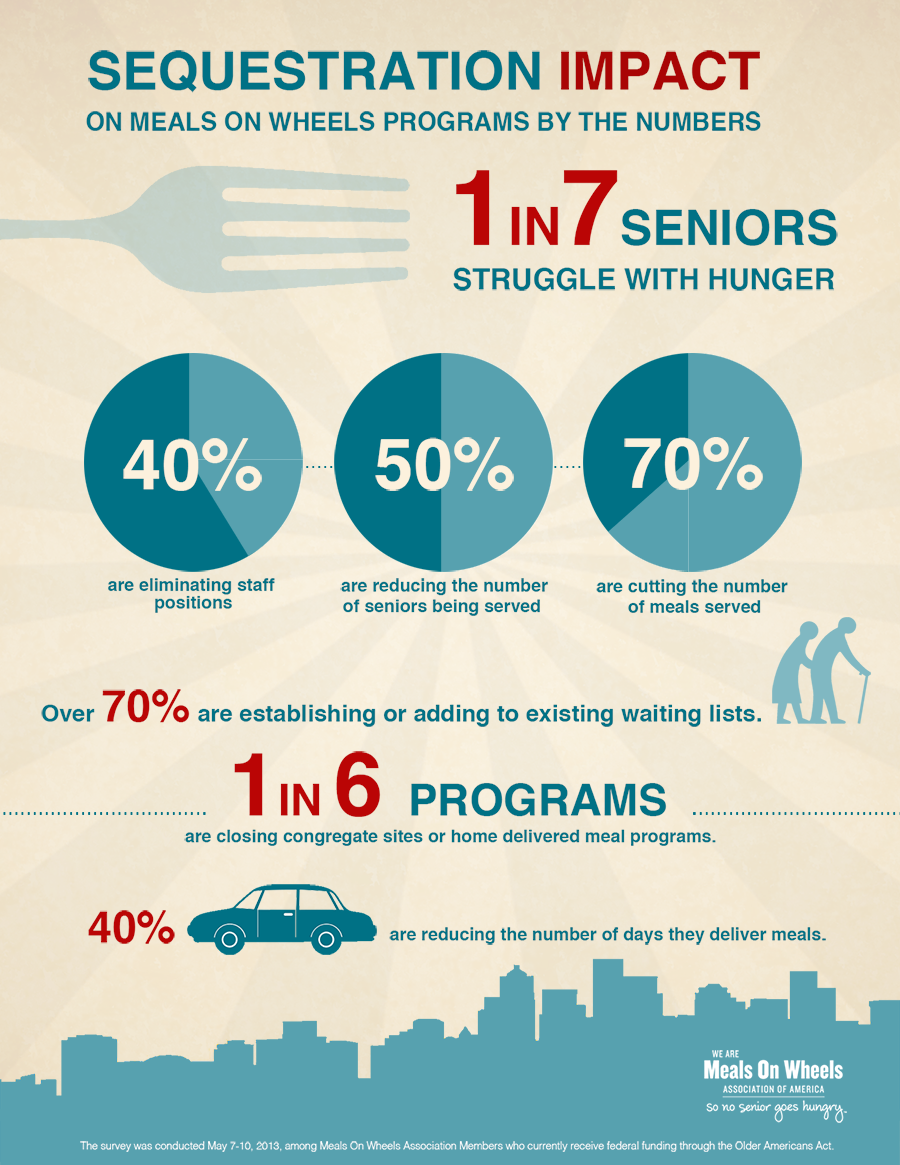Sequestration cuts will total $1.2 trillion through fiscal year 2021. This year there is a 5.3 percent cut, totaling $85 billion. The cuts are indiscriminate and will impact nearly every federal program.* Here are some of the ways this year’s cut is affecting food and hunger programs, in America and abroad.
Domestic Programs

Marty Robertson unpacks food from the Chagrin Falls Meals on Wheels program for recipient Bernadette Winko, 90, in her Bentleyville, Ohio home on Wednesday, March 14, 2012. (AP Photo/Amy Sancetta)
Savings from cut of 4 million meals: $10 million
Rise in Medicaid costs due to cut of 4 million meals: $489 million
Net cost to U.S. federal budget due to cut of 4 million meals: $479 million
Loss of senior meals, California: 750,000
Loss of senior breakfasts, Palm Beach County, Fla.: 240 daily
Loss of senior meals in group dining facilities, Detroit suburbs and several counties: 86,000
Loss of home-delivered and group dining senior meals, La Crosse County, Wis.: 6,000
International Programs
Cuts to global poverty-focused development assistance (PFDA) programs: $1.1 billion
People who will experience reduced or denied access to lifesaving food: 2.1 million
Children who will experience reduced or denied access to school feeding programs: 234,000
Children who will be unable to receive nutritional interventions that save lives and prevent irreversible damage caused by malnutrition: 605,625
Farmers and small businesses in poor countries that won’t receive support from Feed the Future, a program to help them lift themselves and their communities out of poverty: 1.17 million
Reflections
Ellie Hollander, president and CEO of the Meals on Wheels Association of America: “The real impact of sequester is that our programs don’t have the ability to expand to meet the growing need. We should be investing in these programs to ensure our seniors have the nutritious meals they need to remain healthy and independent.”
Patricia Hoeft, director of senior center nutrition, the Mid-East Area Agency on Aging (Missouri): “How do I decide which 300 seniors aren’t going to eat that day?”
Meals on Wheels recipient, home delivery program, La Crosse County, Wis.: “These meals are sometimes the only meal that I have a day. I don’t drive, so I have to rely on others to get around to doctors’ appointments. I only get $16 a month for food.”
* Some low-income programs are exempt from cuts, including Medicaid, Supplemental Nutrition Assistance Program (SNAP, formerly food stamps), the refundable tax credits and some child nutrition programs.
 |
Greg Kaufmann is a freelance writer and Nation contributor covering poverty in America, primarily through his blog, This Week in Poverty. His work has also been featured on MSNBC’s Melissa Harris-Perry show, CBSNews.com, NPR.org, WashingtonPost.com, Common Dreams and Alternet. He serves as an adviser for the Economic Hardship Reporting Project. |


